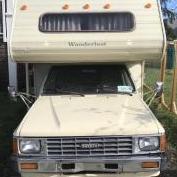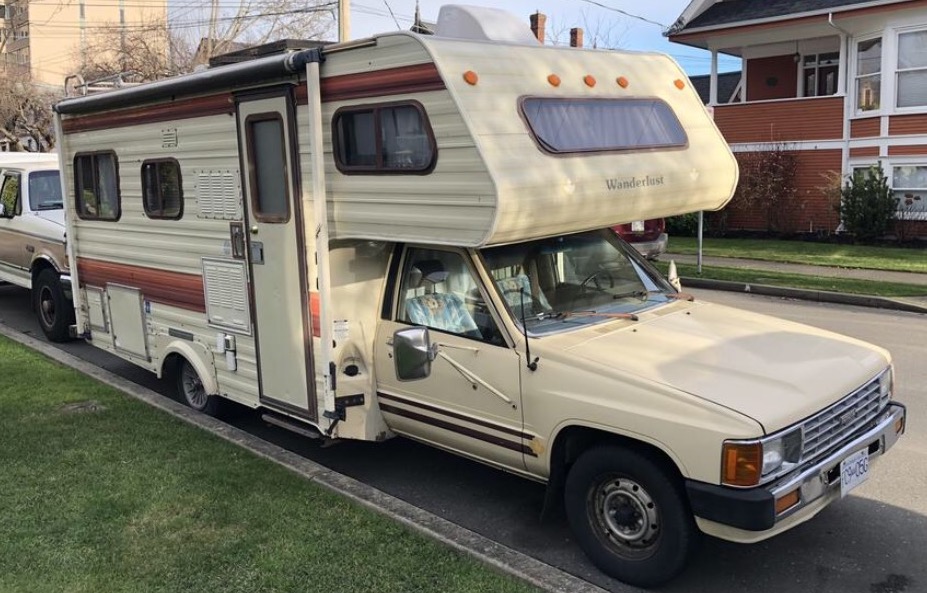Search the Community
Showing results for tags 'batteries'.
-
Hello all, I bought my 1987 Dolphin with everything including manuals EXCEPT the original house battery AND, curiously, the battery manual. So not sure what specs a replacement battery should have. Could anyone help with this? Thanks in advance, PJ
-
I just bought a 1986 Wanderlust from a generally unknowledgeable owner, who hardly used any aspect of the coach and had very little information to impart about its function. This was a bummer, as I haven't owned or operated an RV before and know very little as to the function of the electrical systems and appliances onboard. I've now done a bit of research, but still feeling a little stumped on a few things. Background info: it has 2 deep cycle batteries (which are pooched and I'm replacing), a few solar panels on the roof (45W total) with a Solar Charge Controller, there is also an inverter tucked away in a cupboard beside a big red switch that talks about inverters and backfeeding (see pic). My questions are: 1. When plugging in to the house 120V (or campground), do I need to do anything other than plugging it to get the resulting powering of the coach, and charging of the batteries? 2. I've been reading about converters when plugging into land power. Is this different than the solar charge controller? What does this look like? 3. When wanting to operate my 120V plugs in the coach, while not plugged in to a 120V land source, does the inverter (typically) need to be turned on? Are there other steps that need to happen so that I don't fry my electrical system/die a fiery death of avoidable mishaps? 4. How does "backfeeding" work with RVs? I've read about it when you're plugged into the grid using solar in a residential system, but not with RVs. Thats all for now, but I'm sure your answers will stir up more questions for me. Thank you in advance for all your help.
-
When I bought my 78 micro mini Sunrider last fall the coach battery, a group 27 deep cycle marine, was located under the dinette bench along with an old power converter the previous owner had installed The battery was wired and getting juice from the engine battery but wasn't going through the isolator which he showed me was mounted under the hood near the empty battery tray where I assume the coach battery was intended to live. After doing a bit of research I just picked up a set of 6 V golf cart batteries to upgrade my coach battery capacity. Here is what I'm looking to do and I could use some advice from anyone who's got more experience with this stuff than me, which is probably most of you. Lol. I've now got the 2 6V batteries wired in series under the dinette bench making one 12 V combo. I'd like to move the marine deep cycle to the tray under the hood and have everything go through the isolator the way it should be to protect the engine battery . Does this make sense? What's the best way to wire it up so that I am drawing power from both the new 12v combo and the marine deep cycle or is it a bad idea having the two batteries far away from each other. Also, I haven't come across anything that looks like a power center. Any ideas where it would be located or even if these early models had a power center would be helpful. Thanks.
- 26 replies
-
- electrical
- batteries
-
(and 2 more)
Tagged with:
-
My apologies in advance if this topic has already been discussed to death My wife and I have been live-aboard cruisers on our 37' sailboat for the last 8 years. We bought a Toyota motorhome last summer and are doing a few things to make our lives "aboard" easier. We have really liked our 12vdc refrigeration on the boat for many reasons. We're beginning to look at changing from our old and tired propane / AC refrigeration to a 12vdc system. We'd be interested to hear of any real-world experience any of you might have regarding using 12vdc refrigeration in a Toyota RV. We already have 2 120w solar panels, a Frigiboat compressor (we'd need to add the fan cooling add-on to the compressor), and a pretty good sized evaporator. Here are a few of the many thoughts we've been tossing around: - The boat has a house bank of 6 Trojan T-105 golf cart batteries for a total of 675w of 12vdc power. I won't even consider using this much storage on the RV due to the weight, so I'll need to come up with a reasonable compromise. - Our most desirable camp sites tend to be in the shade. - On the boat, we'd often sail for days on a passage and the panels and wind generator would keep the batteries charged (unless we had to run the water maker and the sun wasn't out). This included the additional loads for navigation equipment, radios, and nighttime running lights. - Our fridge on the boat ran at about a 1/3 duty cycle, drawing about 40 amp hours per day. However, we should be able to build a better insulated efficient top opening fridge than the one on the boat. It will fit in the same or less space than the current 120vac / propane fridge. - We'll be running the engine in the RV more often than we did on the boat, so the alternator will take care of some or most of the charging load except when we stay in one place for a while. ... and so on.
- 38 replies
-
- refrigeration
- solar
-
(and 1 more)
Tagged with:
-
Where is the best location to put 3 to 4 house batteries (possibly sealed 12 volt Group 29's) if you were starting new with the gutted interior of a 1982 18' Toyota Sunrader? Forget the area behind the drivers seat because thats where I built the new bathroom. I can put one battery under the hood but what about the other 2 to 3 batteries? I'm thinking weight distribution here...if it matters. Thanks P.S. I just asked this same question at the Toyota motorhome Yahoo group too.
- 33 replies
-
- house battery
- batteries
-
(and 1 more)
Tagged with:



